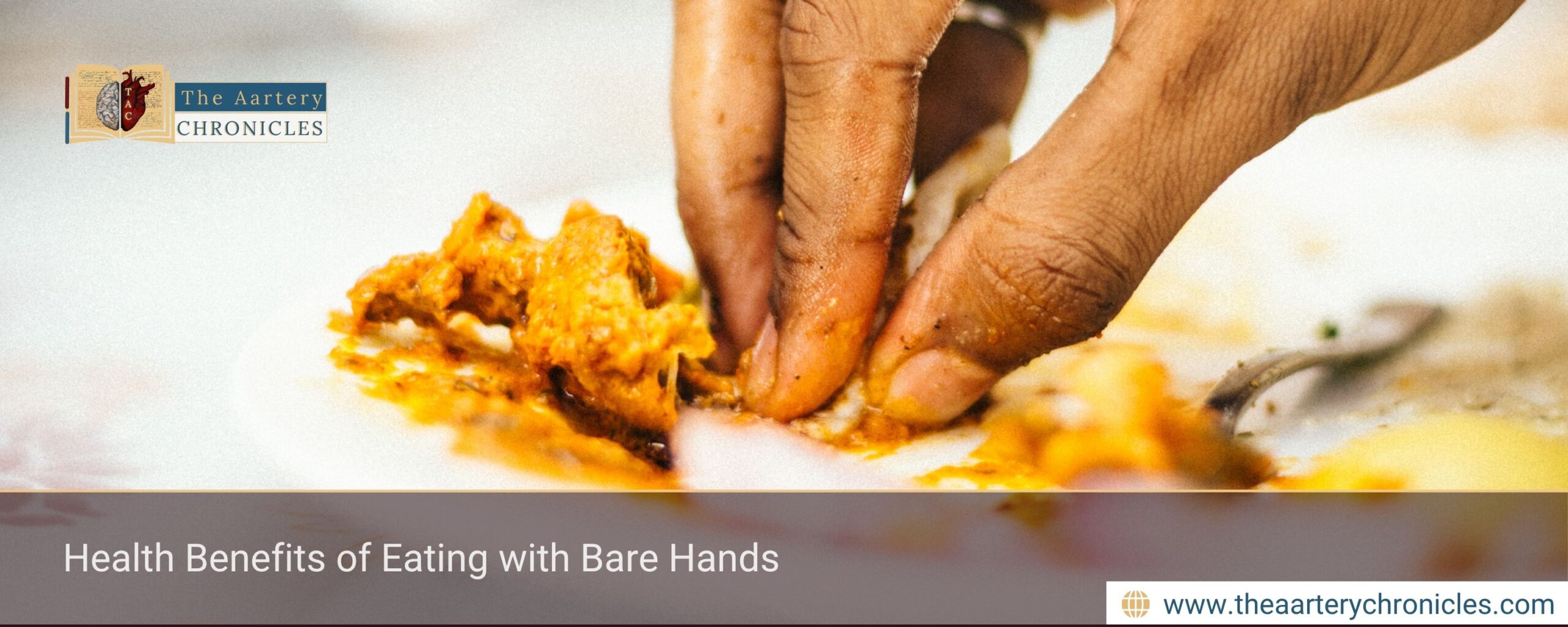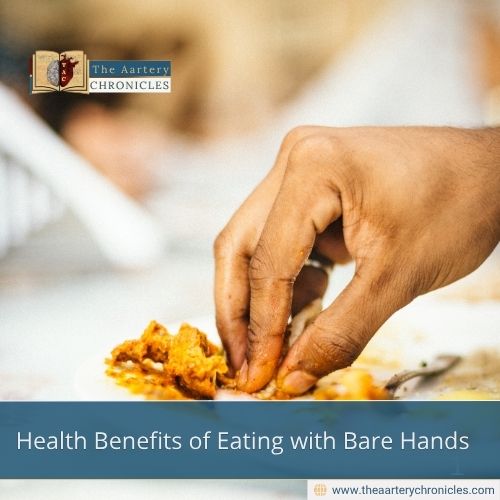

Why Eating with Your Hands Is Good for Your Health
Summary: Eating with your bare hands isn’t just a cultural habit; it’s a mindful, health-promoting practice. Rooted in Ayurveda and tradition, this way of eating enhances digestion, balances gut microbes, prevents overeating, and strengthens the connection between body and mind. Here’s why putting down the spoon might actually be good for your health.
“Did you know your hands might be the most natural tool for better digestion and mindfulness?”
While modern dining often favours cutlery, Indians have long embraced the ancient practice of eating with their bare hands, a tradition that science now recognises as beneficial to health.
Benefits of Eating with Bare Hands Without Using Cutlery
Indians have this traditional habit of eating with their bare hands, rather than using cutlery. This is an age-old custom with scientific and cultural importance. Our overseas counterparts may deem this habit unhygienic and unhealthy, but this is far from the truth.
It has been observed scientifically that eating this way has myriad benefits.
1. Mindful Eating
Eating with your hands encourages mindfulness. Each bite becomes intentional: tasting, smelling, and feeling the food connects you deeply to the act of nourishment. This slows down eating and helps you enjoy every flavour and texture.
2. Improved Digestion
Chewing food thoroughly while eating with hands boosts saliva production, helping enzymes break down carbohydrates effectively. This supports nutrient absorption and smooth digestion.
3. Prevents Overeating
When you eat with your hands, you naturally engage all your senses. This helps your brain register satiety signals sooner, keeping overeating in check.
4. Slower, Healthier Eating
Hand-eating slows the pace of your meal, allowing digestive enzymes to work efficiently, reducing bloating, and promoting gut comfort.
5. Balances Gut Microbiome
Our hands harbour friendly microbes that, when exposed in small amounts, strengthen immunity and improve gut-brain communication, essential for both digestive and mental health.
6. Temperature Assessment
Your fingertips act as natural thermometers, ensuring food isn’t too hot before it reaches your mouth, preventing burns and discomfort.
7. Enhanced Eating Experience
Eating with hands makes food feel more personal, sensory, and satisfying. It’s not just a meal, it’s a full experience that connects you to culture, tradition, and gratitude.
History of Eating with Hands
- Indian scriptures like the Vedas and Upanishads emphasised that eating forges a harmonious connection between the food, body and mind.
- The Egyptian, Mesopotamian and Greek civilisations, known as the most advanced civilisations of their time, practised the art of eating with their bare hands.
- Eating with hands is a holistic practice with its roots in Ayurveda.
Ayurvedic Principle of Eating with Hands
According to Ayurveda, the fingers represent the five elements of nature:
- Thumb represents Fire: This regulates our metabolism and transformation
- Index finger represents Air: This regulates movement and circulation
- Middle finder represents Space: This regulates balance and expansion
- Ring finder represents Earth: This symbolises structure and stability
- Little finder represents Water: This aids in balancing fluids and digestion
When we eat with our hands, engaging the above elements activates our Prana (life force energy), thus deepening our bond with food. This aids digestion, improves better absorption of nutrients and fortifies the effective breakdown of food.
Gratitude and Respect for Food
Indian tradition teaches that eating is an act of gratitude. By eating mindfully and without waste, we honour farmers, nature, and the food that sustains us. Sharing excess food and avoiding wastage is a way to show compassion and responsibility.
Caution
Always wash your hands thoroughly before and after meals to prevent contamination and ensure safety.
“I always thought using cutlery was more hygienic, but once I started eating with my hands again, I noticed I felt fuller, calmer, and more connected to my food.” — Rupal Sonpal
Conclusion
In a world chasing convenience, eating with your hands is a return to simplicity, awareness, and health. It’s a reminder that nourishment isn’t just about food, it’s about how we receive it.
So, pause. Feel. Taste. Respect.
Lose the cutlery and reconnect with your food, your roots, and your health.
- Rupal Sonpal
- Blogs,Health News and Updates
- 20 October 2025
- 11:00








